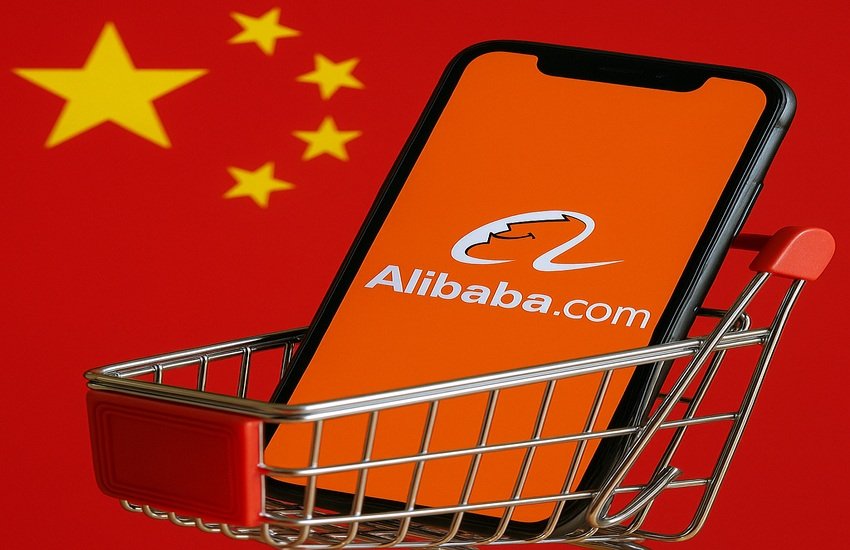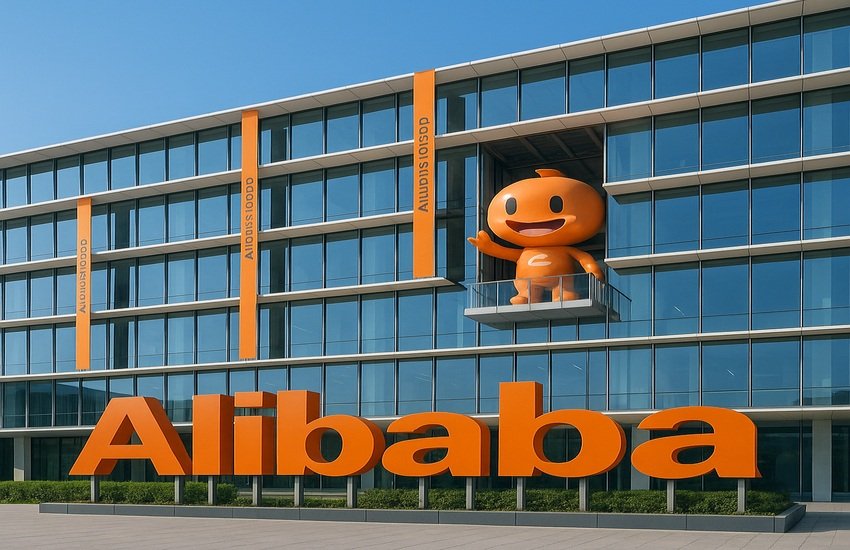Alibaba is rapidly positioning itself as a formidable force in the artificial intelligence (AI) hardware landscape, with innovations that could pose a significant threat to Nvidia’s dominance in China. In a market where Nvidia is already restricted to supplying weaker offerings due to US export controls, Alibaba is doubling down on its AI infrastructure capabilities. During its June 2025 earnings call, Alibaba detailed a strategic push into AI accelerators, model training, inference workloads, and agent-based platforms via its cloud division, leveraging its proprietary Qwen3 models and open-source tools. The company’s massive RMB 380 billion investment plan over three years for AI and cloud infrastructure underscores its ambition. Meanwhile, Nvidia is facing growing challenges from multiple fronts—including Broadcom’s recent blockbuster partnership with OpenAI to design custom AI inference chips. This development reveals an emerging shift: Nvidia’s grip on AI may be loosening, especially in China where players like Alibaba have both regulatory cover and local infrastructure dominance to compete aggressively.
Domestic Manufacturing & Supply Security
One of Alibaba’s most critical advantages over Nvidia in the Chinese market lies in domestic manufacturing and supply chain security. With the U.S. tightening export restrictions on high-performance chips to China, Nvidia is limited to supplying weakened versions of its top-tier GPUs. In contrast, Alibaba, through its AI-focused investments and partnerships, is building robust domestic capacity to support China’s AI infrastructure independent of Western technologies. This effort includes expanded CapEx spending of RMB 38.6 billion in Q2 2025 alone and a cumulative RMB 100 billion over the past four quarters aimed at developing compute, storage, and AI-centric capabilities. These moves aren’t merely about catching up technologically but are driven by national policy priorities to reduce dependence on U.S. semiconductors. By vertically integrating AI chip production and deployment within its own ecosystem, Alibaba not only mitigates geopolitical risk but also aligns itself with China’s broader self-reliance goals. This supply-side resilience is becoming a key differentiator. It enables Alibaba to iterate rapidly on hardware-software co-designs optimized for Chinese AI applications, a flexibility that Nvidia lacks due to its offshore manufacturing constraints and regulatory oversight. The ability to guarantee hardware availability without the political entanglements Nvidia faces gives Alibaba a durable strategic edge within the Chinese AI market.
Broader AI Inference Capabilities
Alibaba’s advancements in inference workloads, particularly through its Qwen3 models, position it well to serve diverse AI application needs across industries. Unlike Nvidia, which often tailors its GPUs for training and specialized tasks, Alibaba is focusing on inference—the operational side of AI where models actually run in real-time environments. This focus aligns with Alibaba’s customer needs in e-commerce, logistics, and enterprise software. During its June earnings call, Alibaba reported that AI-related revenue already accounted for over 20% of external cloud customer revenue and that inference workloads are growing faster than training. Notably, Alibaba is developing sandbox environments and agent-based architectures through its AgentBay platform, further enabling complex AI tasks such as multi-tool orchestration and enterprise-specific automation. These aren’t abstract R&D efforts—they are already being commercialized via platforms like DingTalk and AMAP, which integrate generative AI to offer agent-driven work feeds and spatial intelligence respectively. In this context, Alibaba is no longer just a hyperscaler but a vertically integrated AI deployment platform, catering to inference-heavy, latency-sensitive use cases that Nvidia’s traditional data center offerings may not efficiently support. By owning the end-to-end AI pipeline, from hardware to application-layer services, Alibaba is cultivating a stickier, more embedded relationship with enterprise clients than Nvidia can currently achieve in China.
Cloud Integration Advantage
A key reason Alibaba can disrupt Nvidia within China lies in its tightly integrated cloud ecosystem, which serves as the foundation for its AI services. Unlike Nvidia, which relies heavily on hardware sales and partnerships with hyperscalers, Alibaba owns both the infrastructure and the customer-facing AI services. This positions it uniquely to capture synergies between compute, storage, networking, and AI workloads. The company has announced a strategic partnership with SAP to host and enhance enterprise applications with AI using Alibaba Cloud, reinforcing its global credibility. Moreover, Alibaba Cloud is integrating its Qwen3 models directly into its platform offerings, allowing customers to deploy and fine-tune AI models natively without the overhead of external tools. The AgentBay sandbox environment and Qwen-Coder AI developer tools are further reducing friction in model deployment, driving usage across sectors like automotive, healthcare, and education. The result is a closed-loop ecosystem where AI models, inference chips, developer tools, and compute infrastructure all reside within Alibaba’s environment. This eliminates the vendor fragmentation that often plagues Nvidia-based workflows in China. Furthermore, the combination of high user engagement from platforms like Taobao and Ele.me with Alibaba’s AI cloud services provides a rich data environment for real-time AI optimization—a synergy Nvidia lacks due to its absence from consumer-facing applications. This holistic integration not only lowers costs but also accelerates AI adoption, especially in domestic industries that are already familiar with Alibaba’s enterprise stack.
Regulatory & Geopolitical Tailwinds
Regulatory constraints on Nvidia are becoming a competitive tailwind for Alibaba. With U.S. export restrictions on advanced chips like the A100 and H100 series, Nvidia is only able to offer downgraded alternatives in China. Meanwhile, Chinese regulators are actively promoting domestic innovation in AI, semiconductors, and cloud infrastructure. Alibaba is well-positioned to benefit from these policies. Its AI infrastructure development aligns with the Chinese government’s push for technological self-sufficiency and AI sovereignty. This regulatory environment not only shields Alibaba from external shocks but also creates opportunities to receive state backing, including subsidies and fast-track approvals for data center expansion or semiconductor development. On the geopolitical front, Alibaba’s investments also hedge against potential fragmentation of global supply chains. In a world where access to U.S.-origin IP becomes increasingly restricted, Alibaba’s indigenous R&D capabilities allow it to maintain a leadership position in China’s digital economy. Furthermore, developments like the Broadcom-OpenAI partnership, where OpenAI is designing its own inference chips to bypass Nvidia shortages, reflect a broader industry shift away from dependence on a single vendor. While OpenAI and Broadcom focus on U.S. markets, the precedent they set validates Alibaba’s strategy in China. The global narrative is moving towards diversification of AI hardware suppliers, and Alibaba is emerging as China’s most viable homegrown alternative to Nvidia.
Key Takeaways
Alibaba’s push into AI chip innovation, cloud integration, and agent-based inference architecture marks a potentially disruptive chapter for Nvidia’s business in China. With a strong domestic manufacturing base, growing inference capabilities, and seamless cloud-to-application integration, Alibaba appears well-positioned to exploit regulatory and geopolitical dynamics favoring indigenous solutions. However, challenges remain. Nvidia’s CUDA ecosystem is deeply entrenched among Chinese developers, and global sentiment toward U.S. semiconductor leadership still carries weight. Moreover, while Alibaba has made significant AI investments, its financials reflect a business still in transformation. With a trailing twelve-month EV/EBITDA multiple of 11.33x and an EV/Revenue of 2.10x, Alibaba trades at a valuation that factors in optimism but still lags some global AI peers. Its LTM P/E of 15.83x suggests moderate investor confidence in forward earnings power. Whether this valuation captures the full potential of its AI ambitions or underestimates execution risk remains to be seen. Alibaba may not dethrone Nvidia globally, but within China’s walls, the contest is no longer one-sided.





